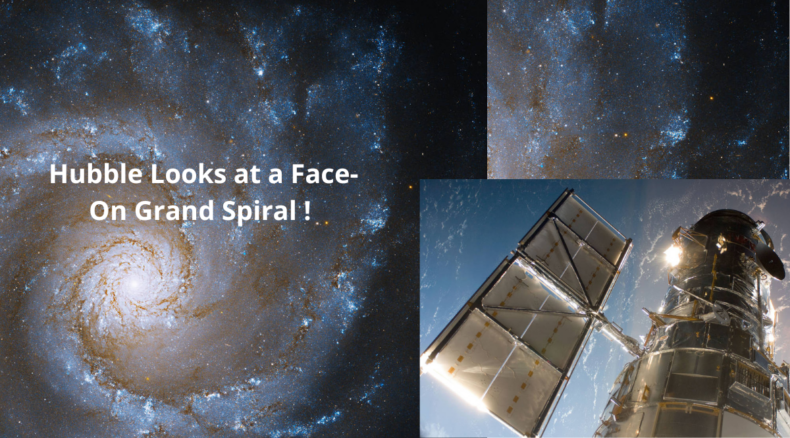New image captured by Hubble Telescope
NASA’s Hubble special space Telescope has detected the center of a galaxy 53 million light-years away. This distinctive galaxy has arms that are very clear and seem to wrap around the centre. Stars are seen forming in the arms of these galaxies. This image from NASA’s Hubble Space Telescope features the Grand Design Spiral, NGC 3631, located some 53 million light-years away in the direction of the constellation Ursa Major. The “arms” of grand design spirals appear to wind around and into the galaxy’s nucleus.

What is in the new captured image ?
Close inspection of NGC 3631’s grand spiral arms reveals dark dust lanes and bright star-forming regions along the inner part of the spiral arms. Star formation in spirals is similar to a traffic jam on the interstate. Like cars on the highway, slower moving matter in the spiral’s disk creates a bottleneck, concentrating star-forming gas and dust along the inner part of their spiral arms. This traffic jam of matter can get so dense that it gravitationally collapses, creating new stars (here seen in bright blue-white).
The image uses data collected from Hubble’s Wide Field Camera 3 and Advanced Camera for Surveys. The color blue represents visible wavelengths of blue light, and the color orange represents infrared light.

Hubble space telescope
Named in honor of the trailblazing astronomer Edwin Hubble, the Hubble Space Telescope is a large, space-based observatory, which has revolutionized astronomy since its launch and deployment by the space shuttle Discovery in 1990. Far above rain clouds, light pollution, and atmospheric distortions, Hubble has a crystal-clear view of the universe. Scientists have used Hubble to observe some of the most distant stars and galaxies yet seen, as well as the planets in our solar system Hubble’s capabilities have grown immensely in its over 30 years of operation. This is because new, cutting-edge scientific instruments have been added to the telescope over the course of five astronaut servicing missions. By replacing and upgrading aging parts, these servicing missions have greatly extended the telescope’s lifetime.
Read More : In 2024, China plans to build a massive space telescope to study far-off galaxies













